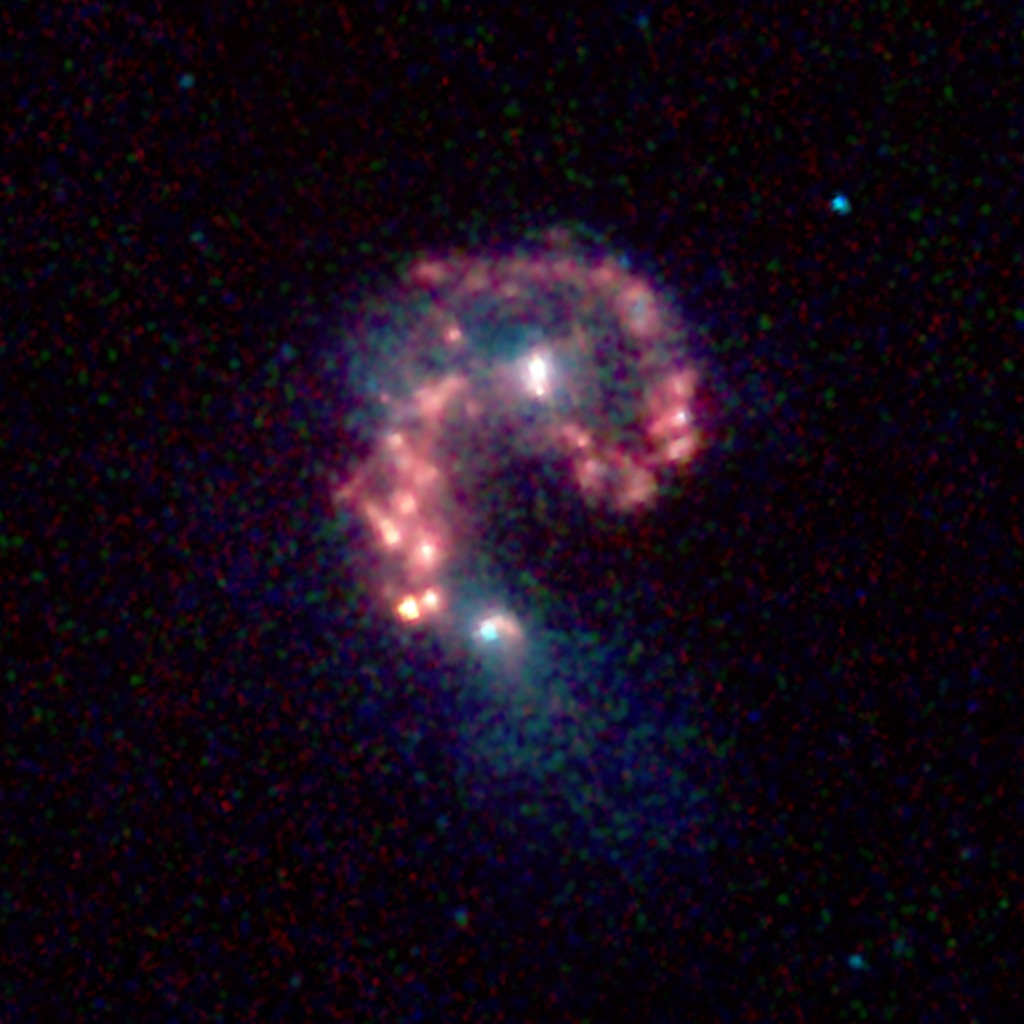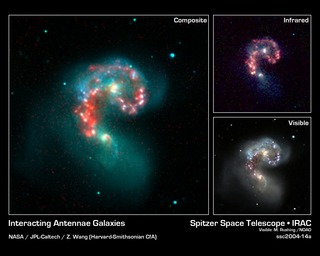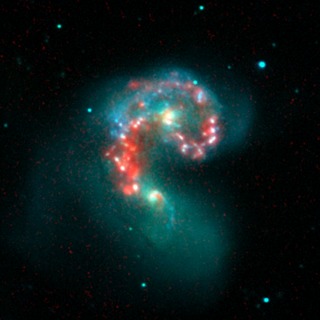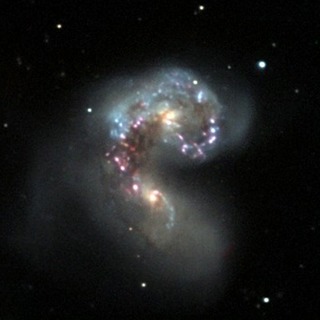
Credit: NASA/JPL-Caltech/Z. Wang (Harvard-Smithsonian CfA)
Observation • September 7th, 2004 • ssc2004-14a2
ssc2004-14a2
This infrared image from NASA's Spitzer Space Telescope reveals hidden populations of newborn stars at the heart of the colliding "Antennae" galaxies. These two galaxies, known individually as NGC 4038 and 4039, are located around 68 million light-years away and have been merging together for about the last 800 million years. The latest Spitzer observations provide a snapshot of the tremendous burst of star formation triggered in the process of this collision, particularly at the site where the two galaxies overlap.
This picture was taken by Spitzer's infrared array camera and is a combination of infrared light ranging from 3.6 microns (shown in blue) to 8.0 microns (shown in red). It shows infrared light from warm dust clouds heated by newborn stars. The dust emission (red) is by far the strongest feature in this image. Starlight was systematically subtracted from the longer wavelength data (red) to enhance dust features.
Throughout the sky, astronomers have identified many of these so-called "interacting" galaxies, whose spiral discs have been stretched and distorted by their mutual gravity as they pass close to one another. The distances involved are so large that the interactions evolve on timescales comparable to geologic changes on Earth. Observations of such galaxies, combined with computer models of these collisions, show that the galaxies often become forever bound to one another, eventually merging into a single, spheroidal-shaped galaxy.
About the Object
- Name
- Antennae Galaxies • NGC 4038 • NGC 4039 • Arp 244
- Type
- Galaxy > Type > Interacting
- Distance
- 68,000,000 Light Years
- Redshift
- 0.005475
Color Mapping
| Band | Wavelength | Telescope |
| Infrared | 3.6 µm | Spitzer IRAC |
| Infrared | 4.5 µm | Spitzer IRAC |
| Infrared | 5.8 µm | Spitzer IRAC |
| Infrared | 8.0 µm | Spitzer IRAC |
Astrometrics
- Position (J2000)
- RA =12h 1m 53.2s
- Dec = -18° 52' 37.1"
- Field of View
- 4.3 x 4.3 arcminutes
- Orientation
- North is 4.5° right of vertical







